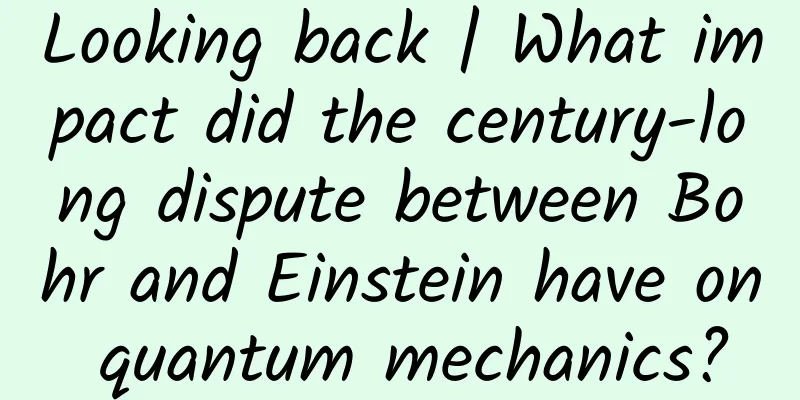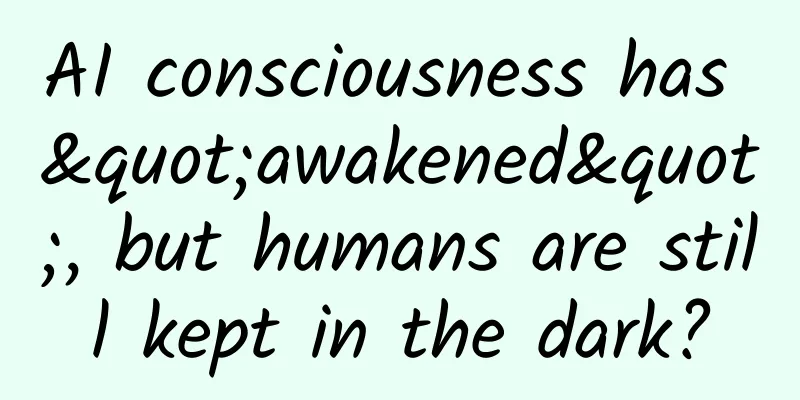Looking back | What impact did the century-long dispute between Bohr and Einstein have on quantum mechanics?

|
137 years ago today (October 7, 1885), Niels Bohr, the founder of the Copenhagen School and a Danish physicist, was born. At the beginning of quantum mechanics, he had a century-long dispute with Einstein involving the theoretical basis and philosophical thoughts of quantum mechanics. Bohr and Einstein's views contradict each other The new worldview brought by quantum mechanics has impacted the philosophical system formed since the 19th century: the nature of the world is probabilistic, not deterministic; before observation, the state of the observed object is uncertain and can only be determined through observation; physical processes are non-local, and objects far apart can also interact instantly through quantum entanglement. These are the views of the Copenhagen interpretation represented by Bohr. Einstein, the representative of the anti-Copenhagen interpretation school, believed that "God does not play dice!" "Does the moon cease to exist when I don't look at it?" Quantum entanglement is "ghostly action at a distance"! Bohr and Einstein debate In 1935, Einstein, Podolsky, and Rosen jointly published a paper proposing the "EPR paradox", on which they developed the hidden variable theory. In 1964, an engineer named Bell proposed that an inequality could be used to test whether hidden variables really exist. Then hidden variables may exist. Otherwise, it means that hidden variables do not exist, and the nature of quantum states is probabilistic. The first quantum technology revolution triggered by the century-long dispute Although people could not truly use it to verify the philosophical debate of the theory due to the experimental technology at the time, this did not affect scientists from making new inventions under the guidance of quantum theory, which directly triggered the first quantum technology revolution starting in the mid-20th century. Among them, the most representative event is the birth of the world's first semiconductor transistor in 1947. The properties of semiconductors must be explained by the band theory derived from quantum mechanics. In the following decades, semiconductor technology has developed rapidly, from the birth of integrated circuits to Intel's first microprocessor 4004 containing 2,250 transistors, to Huawei's Kirin 9000 processor including 15.3 billion transistors... It can be said that semiconductor technology is the foundation of the information age. The world's first semiconductor transistor (1947) In addition, it was only after the establishment of quantum mechanics that people realized that magnetism is a macroscopic quantum phenomenon. Electron spin produces magnetic moment. An electron is equivalent to a small magnetic needle. A large number of electron magnetic moments in a material are arranged in the same direction, producing macroscopic magnetism. The principles of quantum mechanics determine the distribution of electron magnetic moments. Therefore, we invented media such as hard disks that can store large amounts of data, which laid the material foundation for the era of big data. In addition, there are lasers, nuclear magnetic resonance, superconductivity, etc., which are all revolutionary applications produced by the first quantum technology revolution. It can be said that quantum technology is already ubiquitous in our lives. The battle of the century has come to an end As mentioned earlier, after Bell proposed the inequality, it was not really judged. This situation was finally broken in the 1970s. In 1972, SJ Friedman and JF Clauser conducted the first Bell inequality verification experiment, and the results supported quantum mechanics. For more than 30 years, many experimental results have supported quantum mechanics and are inconsistent with the hidden variable theory. In 2015, a team led by R. Hansen of Delft University of Technology in the Netherlands conducted an almost flawless verification of Bell's inequality, which basically declared the failure of the hidden variable theory. Although Einstein ultimately lost the debate of the century, his thinking inspired future generations and indirectly led to the creation of Bell's inequality, which in turn led to the "Bell state" based on Bell's inequality, thus laying the foundation for modern quantum computing and quantum communication. Although Einstein's thinking was incorrect, it was by no means worthless. Scientific research is not afraid of mistakes, but only of not thinking and not practicing. |
>>: Don’t believe these eight rumors about vegetables anymore!
Recommend
Basic knowledge of POS machines, understand POS machine knowledge
The POS machine used always jumps code, which caus...
90% of brand marketing doesn’t even have common sense
In the face of a rapidly changing era of traffic,...
Holding urine until you urinate blood, you don’t know enough about the harm of holding urine...
People lined up at 3 a.m. to buy internet celebri...
How to Evolve Neural Networks with Automatic Machine Learning
For most people working in machine learning, desi...
How are the movies and videos on TikTok edited? Where can I find the materials for TikTok movie editing?
How are the movies and TV videos on Douyin edited...
Li Xiaoyue's Xiaohongshu full-level short video training camp, 30-day community training camp
Li Xiaoyue's Xiaohongshu full-level short vid...
Are you going to cause trouble during the festival? If you don't understand these, you are just amusing yourself
As the saying goes, every festive occasion makes ...
Google outlines Android app development and policy changes for 2021
Google has just disclosed its development plan fo...
Why should we practice Code Kata?
[[155877]] background The concept of Code Kata wa...
Let's talk about the love and hate between ordinary permissions and dangerous permissions
In Android development, permissions are a securit...
SEO tutorial diagnostic case: How can a website with a weight of 4 reach a weight of 5 in just half a month?
I accidentally discovered a collection site befor...
100 offline lectures were held to popularize knowledge about charging piles! Energy Efficiency Electric did it!
With the vigorous development of the new energy i...
How to plan a complete online event plan?
As a network operator, online activities are one ...
[Taught by Irvin Yalom] Group therapy records and interviews | 100% restoration of the scene × 10 video lessons
【Taught by Irvin Yalom】Group Therapy Records and ...
Thoughts on retention, new customer acquisition and product of Bullet Messenger
Bullet Messenger has been very popular recently. ...









